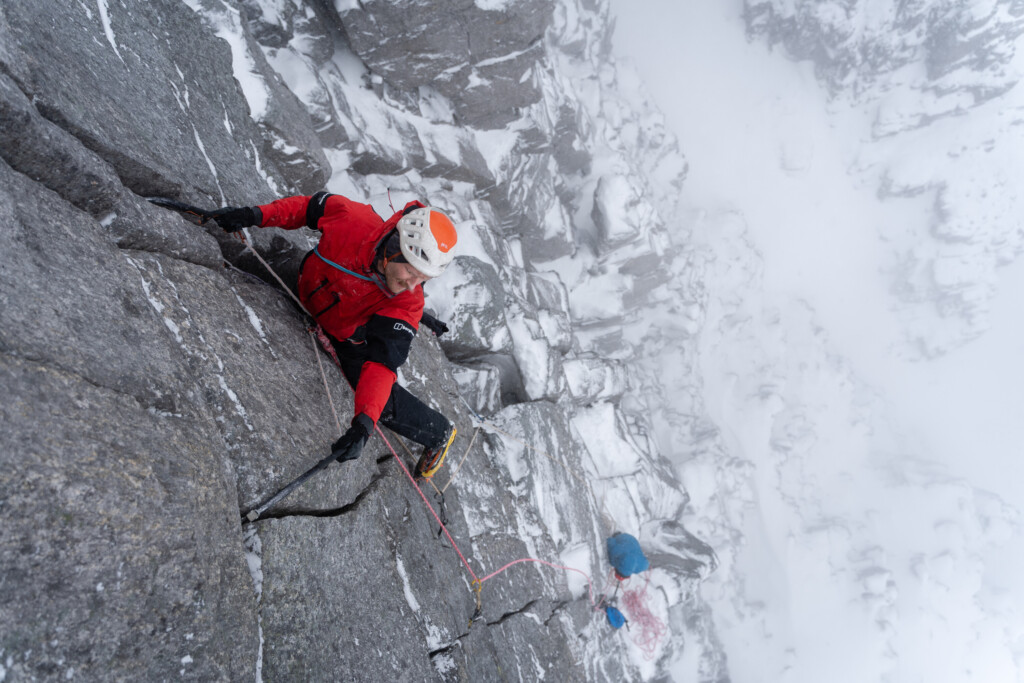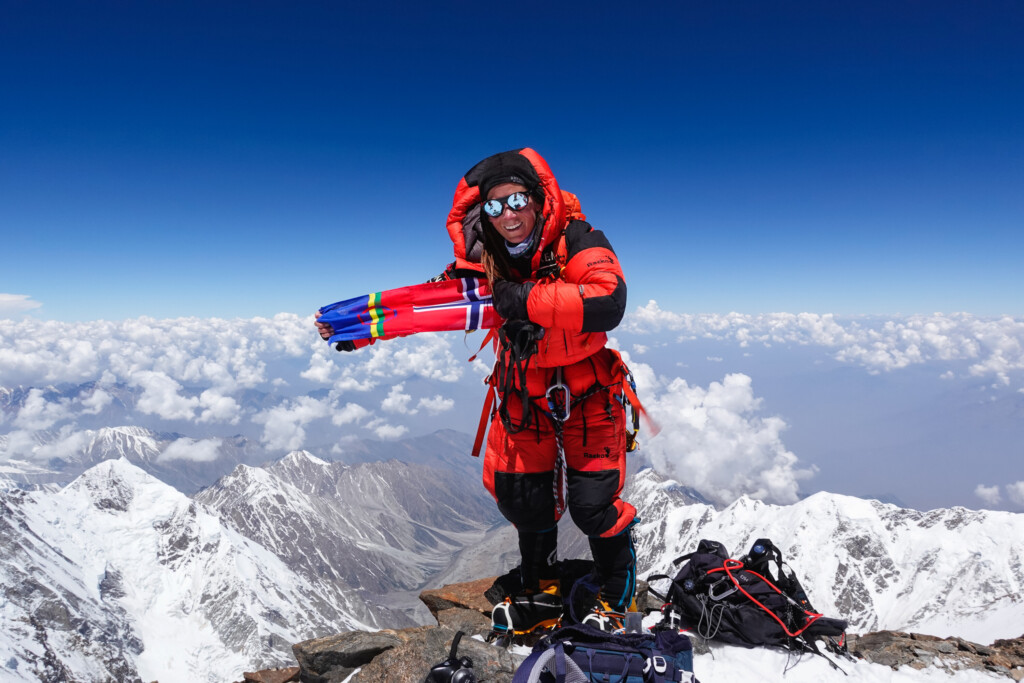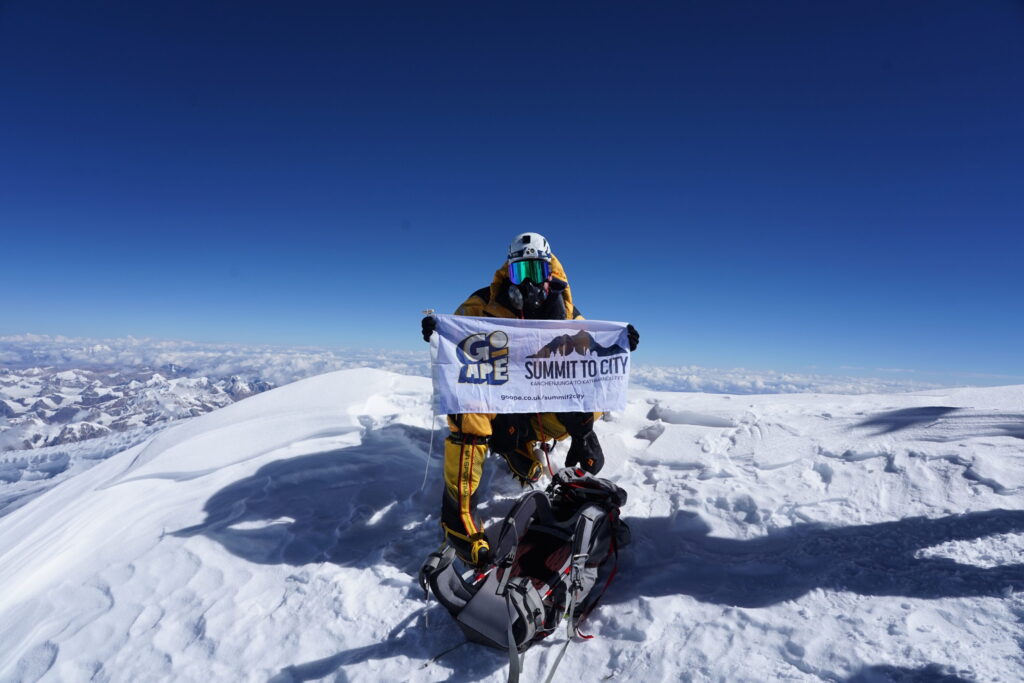Summit to City

Reaching the summit of the world’s third highest mountain is no mean feat for some of the most hard-core mountaineers, but for British explorer, Rupert Jones-Warner, the top of Kanchenjunga was only the beginning of 695-mile Himalayan expedition.
Rupert is no stranger to grand expeditions and several fortunate (and unfortunate) factors led to this adventure. Like many people the pandemic interrupted Rupert’s plans – only his plans were to complete a double ascent of Everest. Incidentally, COVID led Rupert to a new passion, trail running. Then, when he met author and Fastest Known Time (FKT) runner Lizzy Hawker during the Ultra Tour Monte Rosa, he was inspired to combine his two passions and set his own FKT on a unique Himalayan expedition.
Over an 8-week period Rupert set out to complete a 695-mile journey, which incorporated a range of disciplines including high-altitude mountaineering, trekking and ultra-running through some of the most beautiful and demanding environments on the planet. The expedition was set up into three phases: The first phase was the ascent of Kanchenjunga. Phase 2 was the massive journey on foot from the summit, back to basecamp, through the Himalayas and then on to Everest basecamp. The final phase (Phase 3) was the journey from Everest and back to Kathmandu.
I caught up with Rupert to hear more about this mammoth expedition, which took him through freezing temperatures in the ‘death zone’ and extreme heat where he faced monkeys, snakes, leeches, giant insects, dehydration, rope bridges and dangerous river crossings.

Let’s start at the end, you aimed to complete the expedition in 8 weeks, how long did it take in reality?
The expedition from the summit took 518hours, 53 minutes and 43 seconds (approximately 3 weeks) but the whole expedition, including the initial climb, took almost two months. According to my GPS watch, I clocked 1,119km (695miles), with 31,117m of ascent and 35,145m descent. That’s the equivalent of walking from London to Edinburgh and back and climbing the Shard 100 times!
This expedition felt unlike any other I had experienced before. You’re normally almost done when you reach the summit of a mountain, but when we made it to the peak of Kanchenjunga, I knew, the greatest challenges still lay ahead. How long the next phase would take was completely unknown to me at this point.
I was expecting to move a lot faster once I left the mountain behind. The route I had originally planned on Fatmap would have been roughly 330 miles, I thought I could do this in little over a week, but with some last-minute local knowledge I had to change my route.
I was hoping to get over a high pass near Everest which would have made the route a lot shorter, but it was impassable without mountaineering gear. This meant I was forced to rewrite my route and instead I headed south, navigating off my map. Fortunately, I was told this the day before I made my journey to Kanchenjunga! When I finally stumbled into Kathmandu my watch said I had travelled double what I had originally planned!

How did you handle the distance and the altitude?
Not easily, I didn’t acclimatise as well as I have done on previous expeditions on mountains such as Everest and Annapurna. This one felt like I was stuck in a gear that I couldn’t get out of and felt very uncomfortable and slow. This was not hugely surprising as we went from sea level to summit in under a month (most big expeditions on 8,000ers can exceed 2 months in total).

After 12 hours ascending 1400m on steep ice, with freezing temperatures from top camp and no food and drink, the celebratory Percy Pigs at the top were just about the best thing i’ve ever tasted. I was almost more excited for them than the view from 8586m.
We summited Kanchenjunga on the 12th May and there were points I did wonder whether we would make it. Everyone was exhausted after almost a month of climbing, but the need to get to the summit just so I could start my project kept me going. Honestly, when we reached the summit, my main thought was that this is just the start. That is where I started the stopwatch for the Summit to City FKT.
After 12 hours ascending 1400m on steep ice, with freezing temperatures from top camp and no food and drink, the celebratory Percy Pigs at the top were just about the best thing i’ve ever tasted. I was almost more excited for them than the view from 8586m.
How did it feel transition from climbing to trail running?
The mountain phase and the running phase couldn’t have been more different. One day I was at the base of a mountain on a glacier, 24 hours later I was in wet, humid jungle pulling leeches from all over my body.
When we returned to basecamp from the summit it felt emotional to say goodbye to the team, with whom I had lived alongside for over a month and shared such an incredible experience. They left in a helicopter and flew off down the Valley and out of eyesight. It felt incredibly lonely, not helped by the fact it was my birthday!
Leaving the majority of my gear with them I set off with only my 35 litre rucksack and soon the icy, glacial, mountainous scenery transitioned to a super-hot humid jungle teeming with wildlife. It felt like a massive jump both physically and mentally.
Anyone who has spent time at serious altitude will know how much your body depreciates after a big expedition. The body has been malnourished, it’s fatigued and the muscles breakdown, so setting straight out on a FKT through the foothills of the Himalayas, carrying more weight than I would have liked, was daunting to say the least. I had no idea how my body was going to cope taking on such a big challenge. I must admit, I wasn’t sure whether I would be able to complete it, I certainly had no idea it was going to take almost three weeks non-stop!
Did the experience meet your expectations?
Despite extensive research, the Great Himalayan Trail was not quite what I expected, more like a Great Himalayan very vague path! Using my GPS, maps and a decent amount of guesswork, I found my way along the winding trail through incredibly tough but beautiful and remote landscapes.
I have been to the Himalayas multiple times but, I had never run there before and I hadn’t been as far east as Kanchenjunga. This meant it was hard to gauge the terrain and what to expect in terms of temperatures, terrain, shelter, food etc,so I overpacked.
I had wet and dry kit, a sleeping system, a first aid kit, food rations, GPS, map and compass, warm kit, basic wash kit, electronics (cameras, chargers and battery packs). Then, when you add several litres of water and rations, the weight of your pack piles on and it had a massive impact on the speed I was travelling.
What were some of the less glamorous moments?
I stayed wherever I could along the trail, sometimes it was teahouses, sometimes it was strangers floors but the repetitive journey cycle of trekking felt quite consuming at points.
It was hard not knowing where or when your next meal was, where you would next be able to find a drink or where you would rest that night. For most of the journey I would have one meal a day and the rest was topped up with snacks I could find. Often it was small packs of biscuits I bought on the trail. It was a relief to meet with my brother, Will, and my partner Lucy, at Everest basecamp after about 11-12 days, where we continued the journey together.
How did it feel to complete the expedition?
We all arrived at Kathmandu on 6th June at nearly 1am. I thought I’d be jubilant to reach the finish line, but we had just about enough energy to take a photo by the ‘Welcome to Kathmandu’ sign before we set off in search of a new destination, anywhere that might sell food!
Despite spending two months wondering whether we would make it to this point, reaching Kathmandu was a massive anti-climax. We were exhausted, hungry and emotional, our bodies broken. There was no crowd waiting for us at the finish line like in a race. It was just a race against ourselves. Our biggest challenges now felt mundane: where could we get a taxi to the hotel? Did we have enough money for a taxi? Where was a cash machine?
Re-joining the ‘real world’ was as much a shock to the system as leaving it behind had been. You appreciate the small conveniences of modern life: like access to food whenever you need it; cold drinks; knowing where you are going to sleep at night. However, the little challenges, like struggling to check into the hotel now felt as enormous as a 100-mile run.
Who helped make this expedition possible?
Aside from the sponsors, friends and family that supported me throughout the expedition, the major player in making this a success was the people of Nepal. The team on Kanchenjunga, the guides and the many people I met along the journey.
If I was in the middle of nowhere or in a major town, the people of Nepal were incredibly welcoming and would go out of their way to help with food, water, directions and often somewhere to sleep. Too many times I was caught out without shelter or food and water (or even lost) and help seemed to come out of nowhere. If I hadn’t had this support I would probably be completely lost, still trying to find my way back from Basecamp.
The Great Himalayan trail was not quite what I expected, more like a Great Himalayan very vague path!

If you did it all again would you do anything differently?
Learning from this trip, I would take a small bag with only the bare essentials, then I would probably cut that in half again!
I’d make sure to travel fast and light. It was so difficult to gauge the pace and terrain without having done a recce beforehand… I’m excited for the next one and I reckon I will be a lot faster!
Do you think you will combine trail running and trekking in future expeditions? What’s next?
Yes, I’m very keen to combine either trail running or another form of travel that allows you to immerse yourself in a culture. Climbing in the Himalayas is amazing but offers a very limited insight into the Nepalese culture. Running through Nepal gave me a unique view and was an adventure like nothing I had experienced before. I have been thinking about cycling to the Karakoram and climbing a mountain there. We will see!
Rupert’s expedition was made possible with the help of Go Ape, Arc’teryx, Nytetimber and Suunto.
Don’t miss a single adventure
Sign up to our free newsletter and get a weekly BASE hit to your inbox
You might also like

Story • BASE editorial team • Nov 21, 2023
Five Epic UK Climbs You Should Try This Winter
Craving a snowy mountain adventure? Inspired by the Garmin Instinct 2 watch (into which you can directly plan these routes), we've compiled a list of five of the best for winter 2023-24!


Video • BASE editorial team • Jul 21, 2023
Merging Two Lives: The Personal Journey of Hamish Frost
The challenges and triumphs of embracing sexuality in the outdoors

Interview • Hannah Mitchell • Jun 13, 2023
Chasing The 14: The Kristin Harila Interview
In conversation with record-breaking Norwegian mountaineer and Osprey ambassador, Kristin Harila



